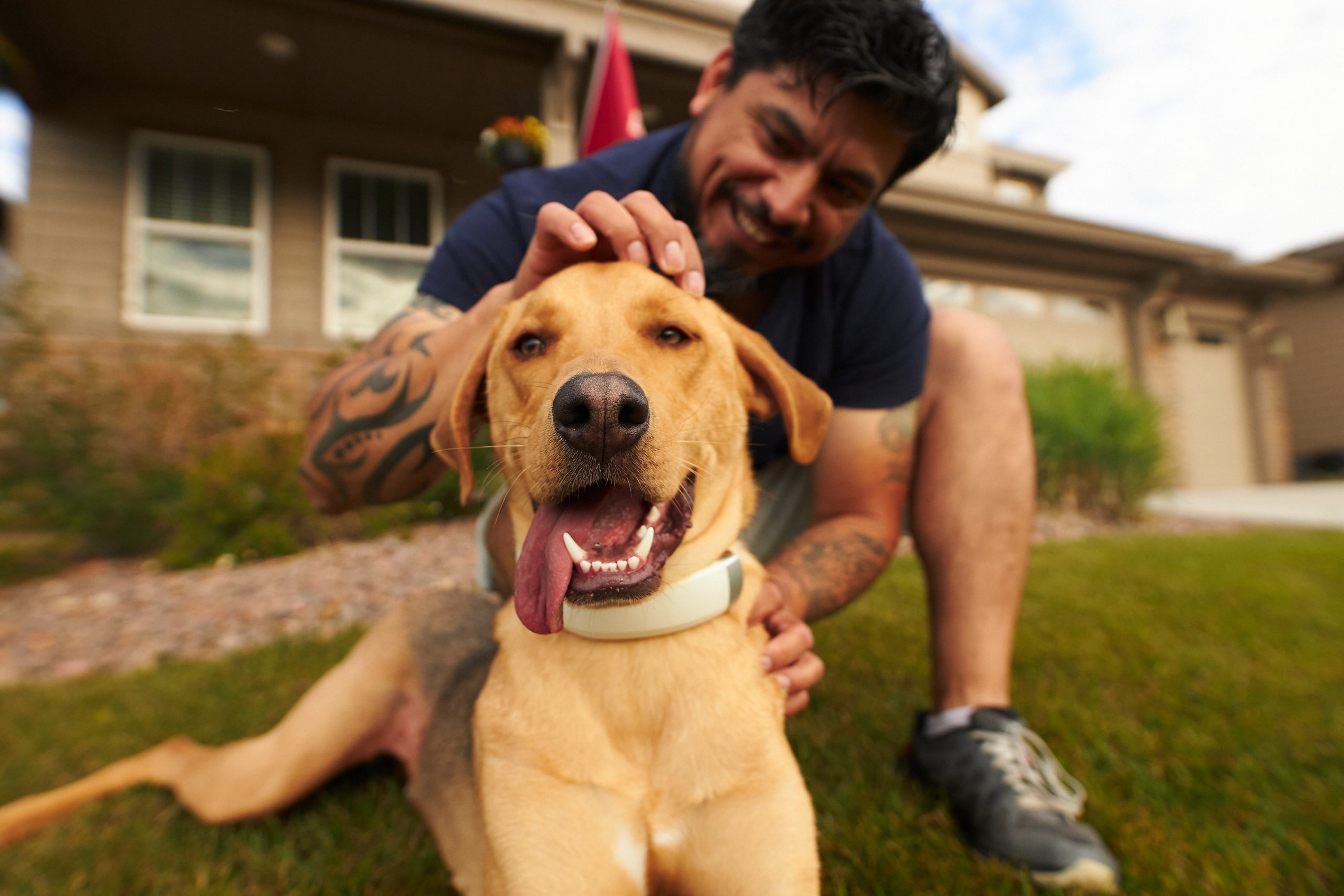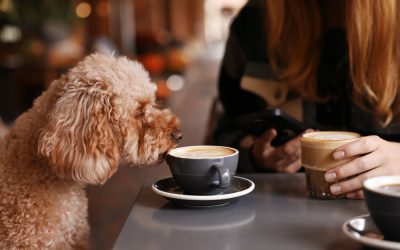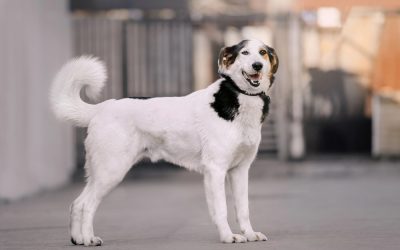Did you know that July is Lost Pet Prevention Month? Alarmingly, 10 million pets are lost every year in the United States.
Since Halo’s mission is to keep dogs safe, we talked to a few of our dog behavior experts to get special insights on how to keep our dogs safe and secure year-round. The tips below came from renowned dog behaviorists Steve Del Salvio, Heather Mickelson, and Jas Leverette.

Here are some of the best dog safety tips that our experts mentioned:
1. Provide your dog with plenty of structured exercise.
“One of the most common reasons why dogs run away is that their owners are not providing them with enough structured exercise,” said dog psychology expert and trainer Steve Del Salvio. “Structured exercise is any activity that challenges your dog’s mind in addition to his or her body.”
To be clear, letting your dog run freely in your backyard is an example of unstructured exercise.
Some examples of structured exercise you can try:
- Take a long walk with your dog paying attention to you and staying at your side
- Practice recall training (see tip #9 for more information)
- Take your dog with you for a bike ride
- Walk on a treadmill with your dog
2. Be a Pack Leader for your dog.
Dogs are instinctively inclined to follow a calm, confident leader. This concept is discussed at length in Cesar Millan’s in-app Halo Training Program.
Being a Pack leader requires you to be highly aware of your energy and tone when you are interacting with (or even in the vicinity of) your dog. When you – as their pack leader – exude a calm confidence and show them affection, it puts your dog at ease and allows them to behave calmly in return.
Del Salvio’s advice is to monitor your energy by “taking time throughout the day to ask yourself ‘how do I feel right now?’”
If your answer is anything other than calm, centered, and focused, then you should wait until you can achieve that calm focus before interacting with your dog.
3. When in doubt, put a leash on your dog.
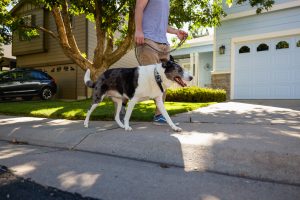
“You should not have your dog off-leash unless you’re 100% certain that you will be able to reliably call them back to you in every situation,” said expert trainer Heather Mickelson.
Your pup should not be off-leash in any very busy area where a sound could startle or distract them, or near areas dense with cars or wildlife.
Mickelson emphasizes that “As the owner, you need to put your dog’s immediate welfare over your own ego and desire for your dog to be ‘free’.”
If you want to test if your dog can handle being off-leash and respond properly when you call them back, you should perform that test in a controlled environment with a long leash line – not out in public where there could be immediate danger.
4. ALWAYS be mindful of your surroundings when with your dog.
This may seem obvious – but if all dog owners were consistently mindful of their surroundings when with their dogs, then lost dogs would be a less frequent occurrence.
“If your dog is out with you, no matter what else is going on, that dog should be your priority and the primary thing you’re paying attention to,” Mickelson said. “Your dog is more important than your lunch, your conversation with another person on the street, or anything else that is going on.”
You should always pay attention and be mindful. Understand what might trigger your dog and only take them into situations where you know they will be comfortable and not anxious – because that anxiety can cause them to want to run away.
“Don’t just do things with your dog because YOU want that experience. Only take your dog into situations that THEY can handle and be successful in. Set your dog up to succeed so you can set yourself up to succeed.”
5. Microchip your dog and join local community groups.
Mickelson and renowned dog trainer Jas Leverette agree that microchipping your dog is an important safety measure that all dog owners should take. A microchip can be used to track down the owner of a lost dog.
“Many people nowadays know to look for a microchip if they locate a lost dog, and use that to get in touch with the owner,” Mickelson said.
Leverertte says you should also join Nextdoor, an app for neighborhoods to share information with each other.
“If your community does see your dog you will find out very fast.”
Similarly, we recommend that you put ID tags on your dog’s collar. The more ways that people could identify your dog and get in touch with you, the better chance that you will be reunited with them in a timely fashion.
6. Make sure your dog is spayed or neutered.
Dogs have incredibly strong reproductive drives.
Mickelson says to “Make sure your dogs are spayed and neutered, because their reproductive drives will cause them to run away and go after other dogs because they smell them.”
When a dog smells another dog who is ready to mate, it can cause them to abandon any notion of safety, listening, or training, and they may do whatever it takes to get to that other dog.
Spaying or neutering your dog(s) is a smart way to reduce that instinctive drive and keep your dog in safe, controlled situations.
7. Make sure your yard is secure.
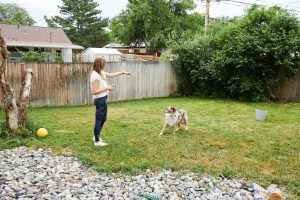
“If you have a fence in your yard, make sure all gates or entryways are closed,” Mickelson advised. “Put a sign up outside of the gate that lets people know that a dog lives here and they must be careful to close the gate behind them.”
If you do not have a physical fence then you should use the Halo Collar Wireless Fence and make sure your dog is properly and reliably trained before ever letting them roam free in the yard.
8. Create an association with doors as a boundary that your dog understands.
“Create an association with the front door threshold so they know they cannot go running out of the front door without you,” Mickelson said. “Same thing with the doors in your car. Make sure they associate those thresholds with staying, unless you’re with them.”
For dogs who are trained on the Halo Collar, you can use a Beacon as a powerful tool to teach your dog not to exit any doors without their Pack leader (you). Many cases of lost dogs could be prevented if dogs were trained not to jump and run out of any open doorway they come across.
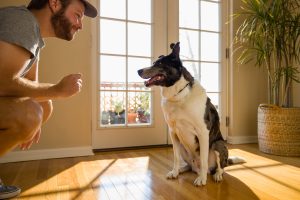
9. Practice recall training with your dog.
It is incredibly important to make sure that your dog understands the concept of coming back to you when called. Having the trust that your dog will return to you in situations filled with distractions is key to dog safety. But in order to build this trust, you and your dog need to practice on your own time.
“Spend some time everyday practicing recall,” Del Salvio said. “One simple way to start this process is in your home – using treats. It’s important to engage your dog’s nose because 60% of their brain is related to their sense of smell. Nose, eyes, ears – in that order.”
Del Salvio’s advice was to practice the following recall training with your dog:
- Take a strong-smelling treat (such as warm bacon), approach your dog, and wave the scent in front of them. As their nose gets engaged, their eyes follow and look for the food.
- At that moment, back away from your dog. When they start coming to you to get the food, say “(dog’s name) come!”
Their ears hear these words each time they are coming to you, and they start to create the association that, “(dog’s name) come!” means “go to your human for a reward.”
Practicing exercises as simple as this can be the difference between your dog running away or returning to safety when you are calling them back.
10. Get a Halo Collar for your dog.
Some of the tips above are related to preventing your dog from running away, while others are about recovering your dog if they do happen to run away.
Getting a Halo Collar for your dog is a catch-all solution.

Halo’s amazing in-app training program will bring you and your pup closer together, teaching you more about their psychology and how to provide them with the structure they instinctively need: rules, boundaries, and limitations. Dogs with a strong foundation like this are less inclined to try to run away.
The Halo Collar is also an effective tool for reminding your dog to stay within their boundaries when they become distracted. A dog that is well-trained on the Halo Collar will always stop and return to safety whenever their collar communicates with them at your Halo Fence boundary.
Finally, in the unlikely event that your dog is lost while wearing the Halo Collar, you can track their exact location from the Halo App. Just make sure that their Halo Collar is on and charged whenever your pup is wearing it.
Mickelson also emphasizes that you should “Make sure that the Halo Collar is on tightly enough so that it is very secure and won’t slip off of their neck.”
There are many things that we, as dog owners, can do to keep our pups safer. Most of it comes down to mindfulness and a strong sense of responsibility. You need to make sure that you’re taking every precaution to only put your dog in situations that they are secure and comfortable in, and practicing recall with them at home so that you can confidently communicate with them inside and outside of the home.
We hope that you find these tips valuable for keeping your pup safe!

